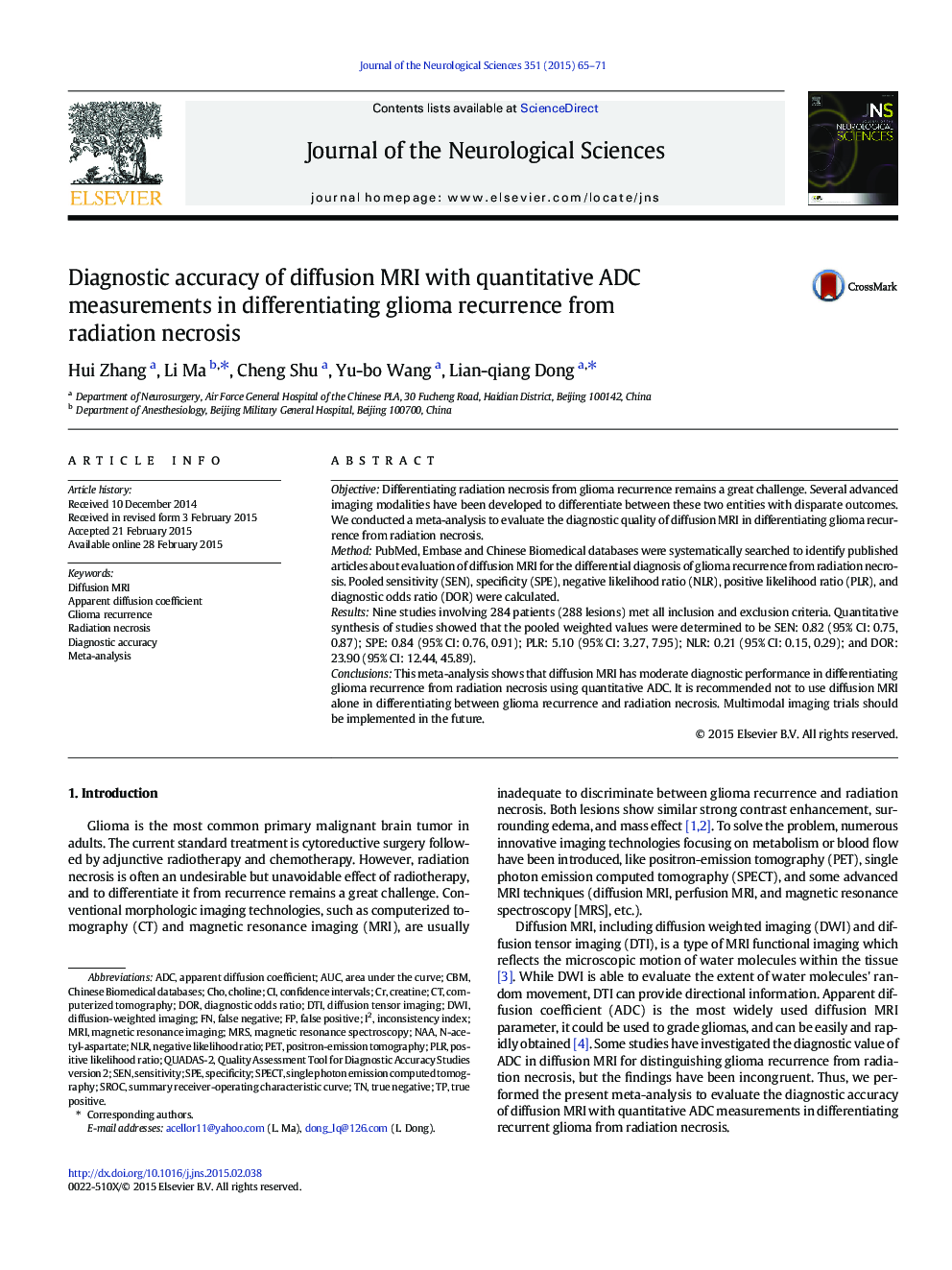| Article ID | Journal | Published Year | Pages | File Type |
|---|---|---|---|---|
| 1913253 | Journal of the Neurological Sciences | 2015 | 7 Pages |
•Meta-analysis was employed to evaluate the diagnostic quality of diffusion MRI.•Diffusion MRI has moderate diagnostic performance in identifying glioma recurrence.•Diffusion MRI should combine other imaging technologies to improve diagnostic accuracy.
ObjectiveDifferentiating radiation necrosis from glioma recurrence remains a great challenge. Several advanced imaging modalities have been developed to differentiate between these two entities with disparate outcomes. We conducted a meta-analysis to evaluate the diagnostic quality of diffusion MRI in differentiating glioma recurrence from radiation necrosis.MethodPubMed, Embase and Chinese Biomedical databases were systematically searched to identify published articles about evaluation of diffusion MRI for the differential diagnosis of glioma recurrence from radiation necrosis. Pooled sensitivity (SEN), specificity (SPE), negative likelihood ratio (NLR), positive likelihood ratio (PLR), and diagnostic odds ratio (DOR) were calculated.ResultsNine studies involving 284 patients (288 lesions) met all inclusion and exclusion criteria. Quantitative synthesis of studies showed that the pooled weighted values were determined to be SEN: 0.82 (95% CI: 0.75, 0.87); SPE: 0.84 (95% CI: 0.76, 0.91); PLR: 5.10 (95% CI: 3.27, 7.95); NLR: 0.21 (95% CI: 0.15, 0.29); and DOR: 23.90 (95% CI: 12.44, 45.89).ConclusionsThis meta-analysis shows that diffusion MRI has moderate diagnostic performance in differentiating glioma recurrence from radiation necrosis using quantitative ADC. It is recommended not to use diffusion MRI alone in differentiating between glioma recurrence and radiation necrosis. Multimodal imaging trials should be implemented in the future.
